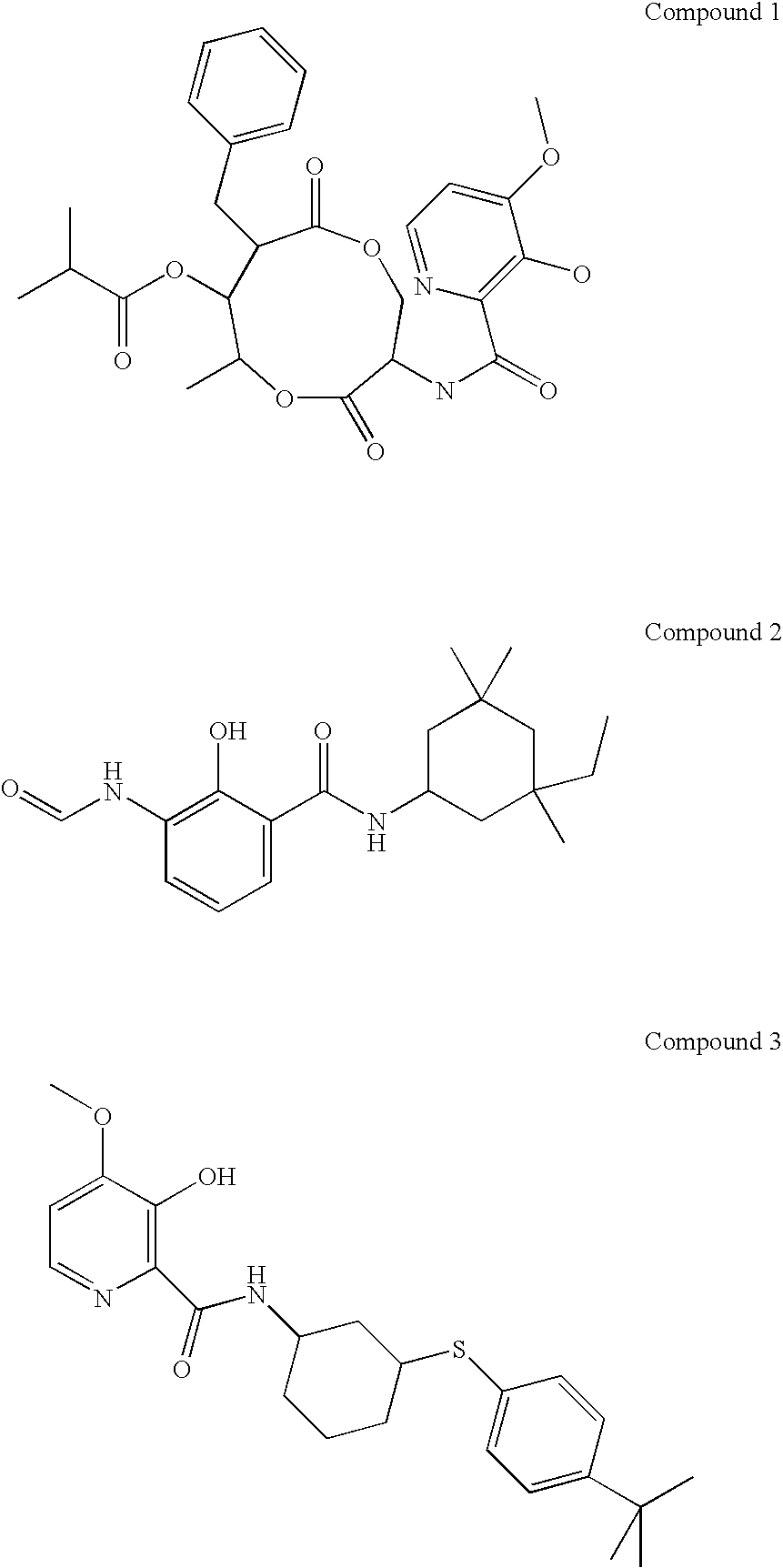METHODS TO CONTROL QoI-RESISTANT FUNGAL PATHOGENS
- Summary
- Abstract
- Description
- Claims
- Application Information
AI Technical Summary
Benefits of technology
Problems solved by technology
Method used
Image
Examples
example 1
Sensitivity of Wild Type and Strobilurin—Resistant SEPTTR Isolates to Picolinamides and Other Qi Inhibitors
[0017]The naturally-occurring picolinamide UK2A, its profungicide derivative Compound 1, and 3 other Qi inhibitors—antimycin A, Compound 2 (a member of the N-formylaminosalicylamide (FSA) series), and Compound 3 (a member of a series of synthetic picolinamide mimics of UK2A), were tested for in vitro fungitoxicity towards SEPTTR field isolates LARS 15 and R2004-6 in a microtiter plate assay (Table 1). The Qo inhibitors azoxystrobin, kresoxim-methyl and famoxadone were included as standards. LARS 15 is sensitive to strobilurins, whereas R2004-6 contains the G143A mutation in cytochrome b which confers resistance to strobilurins.
[0018]The Qo inhibitors were highly active against the LARS 15 strain but showed little or no activity against the QoI-resistant strain R2004-6. In contrast, UK-2A, Compound 1 and the other Qi inhibitors were highly active against both strains and in most...
example 2
Efficacy of Compound 1 in-Planta against Wild Type and Strobilurin-Resistant SEPTTR
[0021]In-planta testing was performed on the second attached leaf of 16 day old wheat cultivar Riband, highly susceptible to SEPTTR. Wheat leaves were sprayed with a dilution series of Compound 1 (as an SC formulation) or the azoxystrobin-containing fungicide Amistar. The next day, treated leaves were inoculated with either the QoI-sensitive isolates (S27 or Lars 15-03) or the QoI-resistant isolates (G3-03 or TwistB-02). Visual inspection 21 days after inoculation revealed Amistar control of S27 and Lars 15-03 at 0.9 ppm and 2.8 ppm, respectively. No control was evident for G3-03 and TwistB-02 at 25 ppm.
[0022]Breaking rates for control of the QoI-sensitive isolates S27 and Lars 15-03 with compound 1 were 0.3 ppm and 2.8 ppm, respectively. The QoI-resistant isolates G3-03 and TwistB-02 were controlled at 0.9 ppm and 0.3 ppm.
[0023]Table 3 summarizes the results for 5 QoI-sensitive and 6 QoI-resistant st...
PUM
| Property | Measurement | Unit |
|---|---|---|
| resistance | aaaaa | aaaaa |
| real time PCR | aaaaa | aaaaa |
| concentrations | aaaaa | aaaaa |
Abstract
Description
Claims
Application Information
 Login to View More
Login to View More - R&D
- Intellectual Property
- Life Sciences
- Materials
- Tech Scout
- Unparalleled Data Quality
- Higher Quality Content
- 60% Fewer Hallucinations
Browse by: Latest US Patents, China's latest patents, Technical Efficacy Thesaurus, Application Domain, Technology Topic, Popular Technical Reports.
© 2025 PatSnap. All rights reserved.Legal|Privacy policy|Modern Slavery Act Transparency Statement|Sitemap|About US| Contact US: help@patsnap.com

